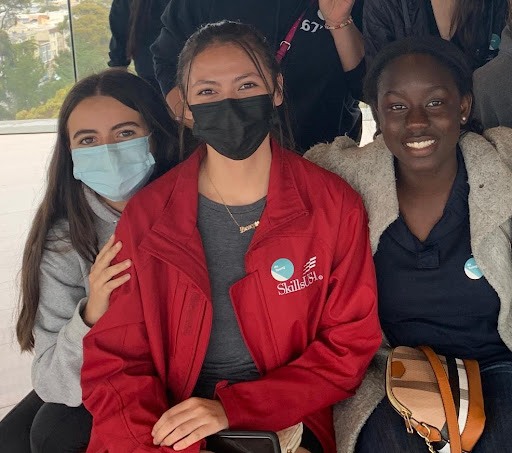Community Partners Motivate Students to Dig in
Topics

We’ve all had the experience of truly purposeful, authentic learning and know how valuable it is. Educators are taking the best of what we know about learning, student support, effective instruction, and interpersonal skill-building to completely reimagine schools so that students experience that kind of purposeful learning all day, every day.
Community partnerships invigorate learning and give students an opportunity to design with a purpose.
During our first robotics competition, the robot barely passed inspection. It wasn’t until the last match that the robot finally worked properly. There was thunderous applause from my students as they successfully witnessed the robot climb the rope. The competition served its purpose of teaching my students teamwork and perseverance. But I was always continually searching for ways to improve the learning process for my robotics and computer science students. They learn to code and build, but they never had to connect their project to a community partner. We decided to participate in Project Invent because we wanted to design with a purpose. The opportunity to solve a real-world problem intrigued me and my students.
Like any real-world design endeavor, the Project Invent program kicks off when students connect with a community member to inform a topic area for them to focus their efforts. My students were paired with a community partner named Michelle. She lives a few miles up north. Her mother introduced her as an aspiring model and cheerleader who loves to ride horses. She was diagnosed with cerebral palsy as a baby. My students were excited to learn from her.
In their first online meeting, students were able to talk to Michelle and acknowledge her accomplishments and struggles. They were specifically interested in her desire to drive and be independent. Michelle has a microcar that she is able to drive short distances around town. She drives it to school almost every day. Due to her cognitive impairment, passing the driver’s test would be very difficult, but my students sensed Michelle’s determination.

Credit: Maria Ortiz, Michelle's mother.
This meeting impacted my students, who named themselves The Spirited Six. Sarah, Clarissa, Ricky, Rebecca, Raquel, and Maicy began meeting at lunch and after school to brainstorm ways that they could help Michelle. They did extra research by interviewing a student at our school who also has cerebral palsy. By meeting community partners in person, the design process was different than I had seen performed by students in the past. I had come to expect students to receive a task, make an attempt, and rarely put much effort into redesigning. The Spirited Six approached their project enthusiastically: they wanted to make sure that all suggestions for innovation would benefit Michelle. Their empathy and thoughtfulness impacted their designs.

Credit: Lily Lee-Jones.
The Spirited Six proposed three designs that would help Michelle with her daily activities. First, Michelle’s mom often helped her with hair and makeup for cheerleading and modeling. They sketched a vacuum that would gather the hair and a mechanical lever to clip the hair. Secondly, Michelle noted that she has trouble walking long distances especially during cold weather. The Spirited Six designed a heated boot to alleviate any discomfort from walking. Lastly, Michelle likes to cook and be independent. The Spirited Six designed a food chopper that would peel and slice at the same time. After deliberation, they decided to pursue the food chopper idea, which later would be named The Shakespeeler.

Credit: Lily Lee-Jones.
Although The Shakespeeler originally was designed to benefit Michelle, my students felt that it would also benefit others. They felt it could be safe for young children or anyone with mobility issues. They put thought into designing a safety feature that would prevent anyone from being hurt. They also made sure that everything would be controlled electronically with minimal muscle power required. The final design stemmed from The Spirited Six connecting with their community partner. By building a relationship, my students really wanted to create a product that would improve Michelle’s world.

Credit: Lily Lee-Jones.
The feedback from the students about this experience was overwhelmingly positive. I enjoyed seeing my students learn to communicate and listen to their community partner who helped these budding designers feel more connected to their design. It is important to give students an opportunity to design with a purpose. Once the students are invested, they are truly engaged to design a solution to their problem.
Community partnerships invigorate stagnated learning and give students an opportunity to design with a purpose. In the upcoming school year, I will implement the idea of a community partner in teaching the design process. I know that my computer science and robotics students will be motivated to design a real-world solution as much as our Project Invent team, The Spirited Six, was able to design a solution for their community partner, Michelle.
Photo at top courtesy of Lily Lee-Jones.




